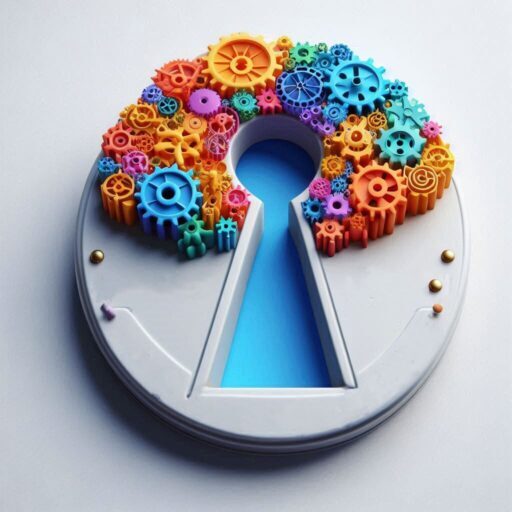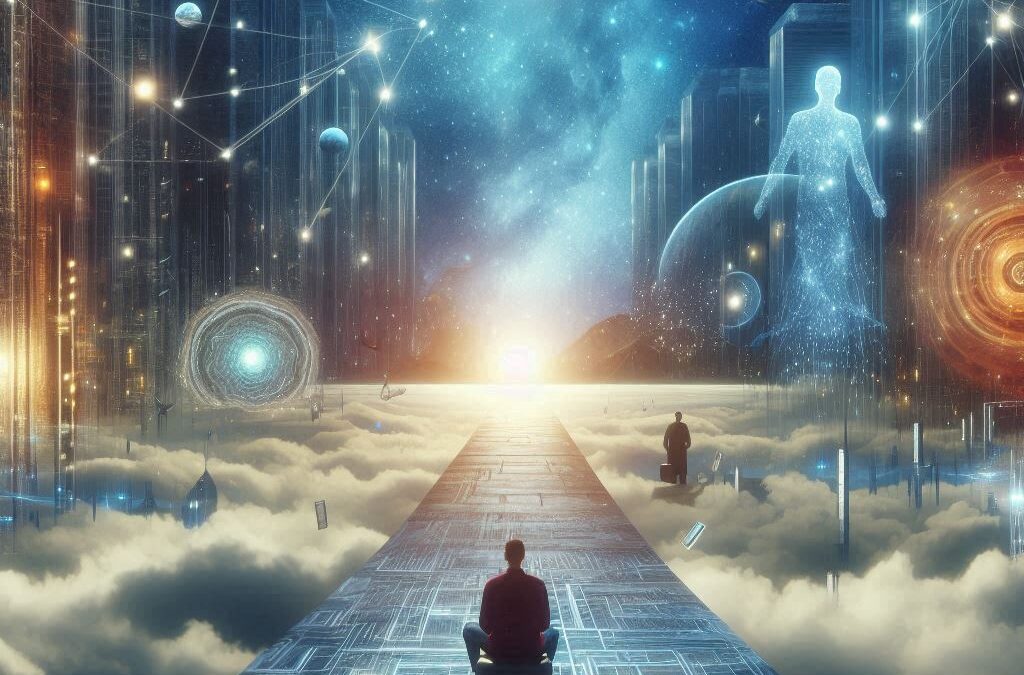In a Nutshell:
Lucid dreaming—a state where the dreamer is aware they’re dreaming and can control their actions within the dream—has long fascinated researchers and enthusiasts alike. But what if these dreams aren’t just figments of our imagination? Some theories suggest that lucid dreaming could be a doorway to parallel realities, allowing us to experience alternate versions of ourselves and worlds. Could our dreams actually be glimpses into other dimensions? Let’s dive into this mind-bending idea and explore the possibilities behind lucid dreaming as a portal to parallel universes.
Lucid dreaming has been a topic of intrigue for centuries, but only recently has scientific research begun to scratch the surface of how and why we experience this fascinating state. In a lucid dream, the dreamer realizes they are dreaming and, in many cases, can exert control over the dream world. While lucid dreaming is commonly seen as a psychological phenomenon, some believe it could be more than that—it may offer access to parallel realities.
What is Lucid Dreaming?
Lucid dreaming occurs when the dreamer becomes aware that they are in a dream. In this state, the individual can often manipulate the dream environment and their own actions. For example, one might choose to fly through a dream landscape or confront subconscious fears. This ability to control one’s actions in the dream world makes lucid dreaming unique compared to regular dreaming.
Lucid dreaming can happen spontaneously or be induced through techniques such as reality checks, dream journaling, or using sleep aids like binaural beats. The key element is self-awareness: the dreamer understands they are not awake, yet they remain within the dream’s realm.
The Parallel Realities Theory
What if lucid dreams aren’t simply reflections of our subconscious minds, but instead windows into alternate realities? The idea that lucid dreaming could serve as a gateway to parallel worlds is rooted in the theory of the multiverse, which posits the existence of multiple, coexisting realities.
Parallel reality theories often draw on quantum mechanics and the concept of “many-worlds,” which suggests that every decision and action in the universe spawns a new, alternate reality. These separate realities might run alongside our own, invisible to us in waking life. According to some proponents of lucid dreaming as a multiverse portal, lucid dreams could allow us to interact with these alternate versions of ourselves or explore different outcomes of our choices.
Lucid Dreaming and Quantum Mechanics
The idea of parallel universes, or “many-worlds,” is based on quantum physics, particularly the work of physicist Hugh Everett. Everett’s “Many-Worlds Interpretation” suggests that every quantum event results in a split into separate realities. While this theory remains speculative in the realm of physics, it has caught the attention of some dream researchers and enthusiasts who believe lucid dreaming might allow us to access these parallel worlds.
In lucid dreams, some individuals report vivid experiences where they encounter versions of themselves living out different lives or find themselves in worlds that feel eerily similar but subtly different from their waking reality. This suggests that, in a lucid dream, the mind may be tapping into other potential timelines, or even experiencing parallel dimensions.
Personal Experiences and Anecdotal Evidence
Countless lucid dreamers have shared experiences that align with the idea of parallel realities. One well-known account is from author and researcher Robert Waggoner, who has written extensively on lucid dreaming. Waggoner suggests that lucid dreams might be more than just psychological constructs, and he argues that they could be experiences in alternate realms or dimensions. In his book Lucid Dreaming: Gateway to the Inner Self, Waggoner discusses how dreamers can interact with seemingly independent entities within their dreams, as if they are encountering alternate versions of reality.
Additionally, some lucid dreamers report experiencing “reality shifts” during their dreams—where the dream environment feels incredibly real, like stepping into another life or universe. These accounts often describe feelings of profound clarity, as if they’ve been transported to another version of reality, with memories and experiences that don’t align with their waking lives.
The Role of Consciousness
A major question in this discussion is: How does consciousness function in lucid dreams? Are we truly experiencing alternate realities, or is it simply our minds’ way of processing information from a deeper state of awareness? Some researchers propose that the lucid dream state may allow the dreamer to transcend the limitations of the physical body, opening up pathways to alternate dimensions or versions of reality that exist beyond our normal perception.
In this view, the lucid dreamer could be “tuning in” to a different frequency of consciousness, allowing them to experience parallel universes that are hidden from our waking awareness. This idea blends elements of quantum physics with more spiritual concepts of consciousness, suggesting that our minds might be capable of exploring the multiverse in ways that go beyond the confines of our physical world.
Skepticism and Scientific Debate
While the notion of lucid dreaming as a gateway to parallel realities is fascinating, it remains highly speculative. Skeptics argue that lucid dreams are simply a product of the brain’s activity during sleep, and any sense of exploring alternate realities can be explained by the brain’s ability to generate rich, complex dreams. The scientific community has not reached a consensus on the nature of lucid dreams, with many seeing them as purely psychological phenomena that occur within the dreamer’s own mind.
However, the lack of concrete evidence doesn’t prevent people from continuing to explore these ideas, both through personal experience and in the field of lucid dream research.
In Summary:
Lucid dreaming offers a fascinating glimpse into the power of the mind, with the potential to serve as a gateway to parallel realities. Whether the lights, landscapes, and people encountered in these dreams are windows to alternate dimensions or simply creations of the subconscious remains an open question. While quantum physics and multiverse theories suggest the possibility of parallel universes, there is no scientific consensus on whether lucid dreaming can truly connect us to other worlds. Regardless, lucid dreamers continue to report profound and unexplained experiences that invite us to consider the possibility that our dreams might be more than just figments of our imagination.

